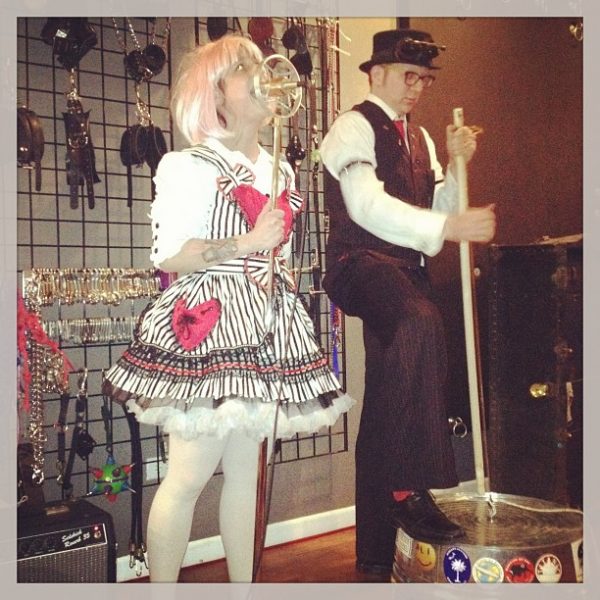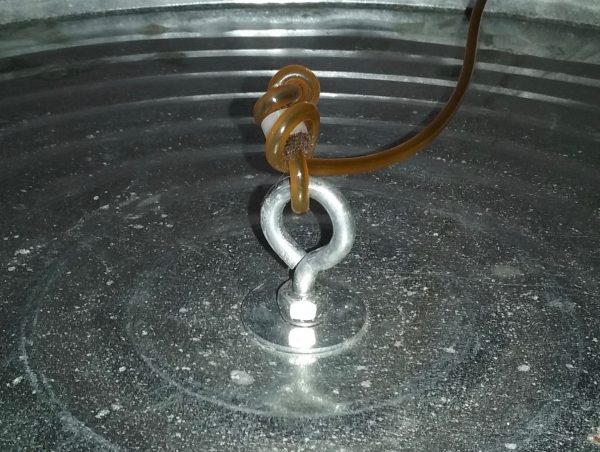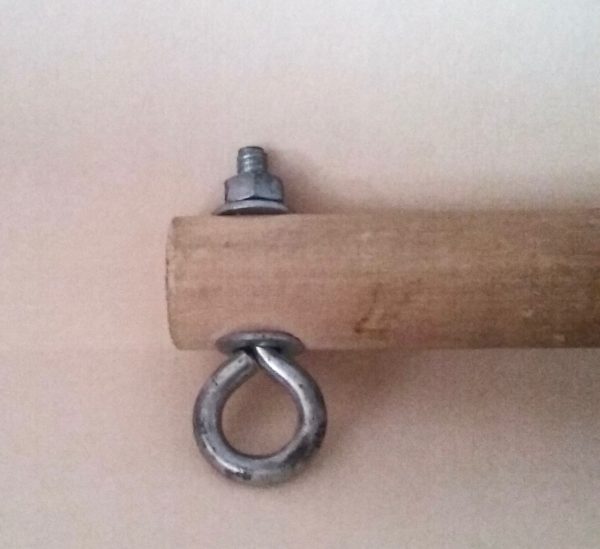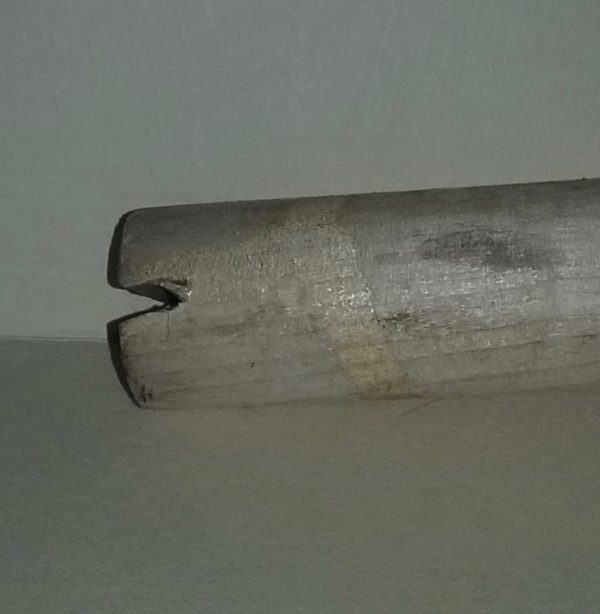It’s not difficult to build a washtub bass. I was able to pick up all the parts in one trip to the hardware store.
Here are the materials:
1 galvanized steel utility tub
2 eyebolts
3 nuts
2 flat washers, two-inch diameter
2 flat washers, not so big
2 lock washers
1 wooden dowel, 48”
1 plunger cup
1 work glove
Rope
As for tools, you will need a drill. A wrench helps to tighten the nuts.
Drill a hole thought the middle of the utility tub. Drill another hole through the dowel. OK, you’re done with the drill. Now it’s time to assemble.
Let’s do the tub first. Thread a nut on one eyebolt as far up as it can go. Put on a lock washer, then one of the washers with the two-inch diameter. Run this through the hole in the tub, outside going in.
Secure the eyebolt on the inside of the tub with the second two-inch washer and another nut. The larger diameter comes in handy. At first I used washers with a smaller diameter. When performing onstage in Spears & Gears at Reggie’s, the eyebolt assembly popped out of the tub! The two-inch diameter washers have proved successful. Tighten up the nuts inside and out so that the assembly is secure. The lock washer reinforces it.
Next, the dowel. Feed the second eyebolt through one of the smaller washers. Feed this through the hole in the dowel. Secure the eyebolt with the other smaller washer, the other lock washer and the last nut.
Now for the rope. It is your musical chord for the instrument. Cut off a six foot length of rope. Tie it to the washtub’s eyehook. Feed the other end through the dowel’s eyehook, but do not tie it.
To play the washtub bass, turn the tub upside down. Plant the dowel on the edge of the tub. Put one foot on the tub and the other next to it on the ground. Pull the rope tight and pluck away! Move it forwards and back to adjust the tones.
I cut a notch in the end of the dowel that rests on the washtub. The dowel catches the lip of the tub. It makes it easer to pivot. I coated the end with some wood glue so that it would not split.
When you’re playing, rest the opposite end of the tub on top of the plunger cup. The will keep your washtub bass from sliding away from you.
Wear a work glove on your non-plucking hand, other wise you’re going to get rope burns and bloody knuckles.
The rope got too rough for my liking, so I decided to use cello strings. Not knowing where to get them, I asked Michelle Morales Miles, the cellist of The Loneliest Monk. She told me, “The internet.” I found Slap Happy Weed Wackers, who make synthetic upright bass strings in assorted colors. The orange seemed to have a nostalgic sepia tint, but the red or pink certainly would pop!
When you’ve practiced and you’re ready to play live, you’re going to butt heads with the sound engineer. They are going to want to put a microphone under the tub. Explain to them politely, but firmly, that you do not want the metal tub to press down on their audio cable and break it. The microphone can be on the outside, pointed down toward the eyebolt in the middle.
Happy thumping!






There are no voices yet... Post-script us a message below, won't you?